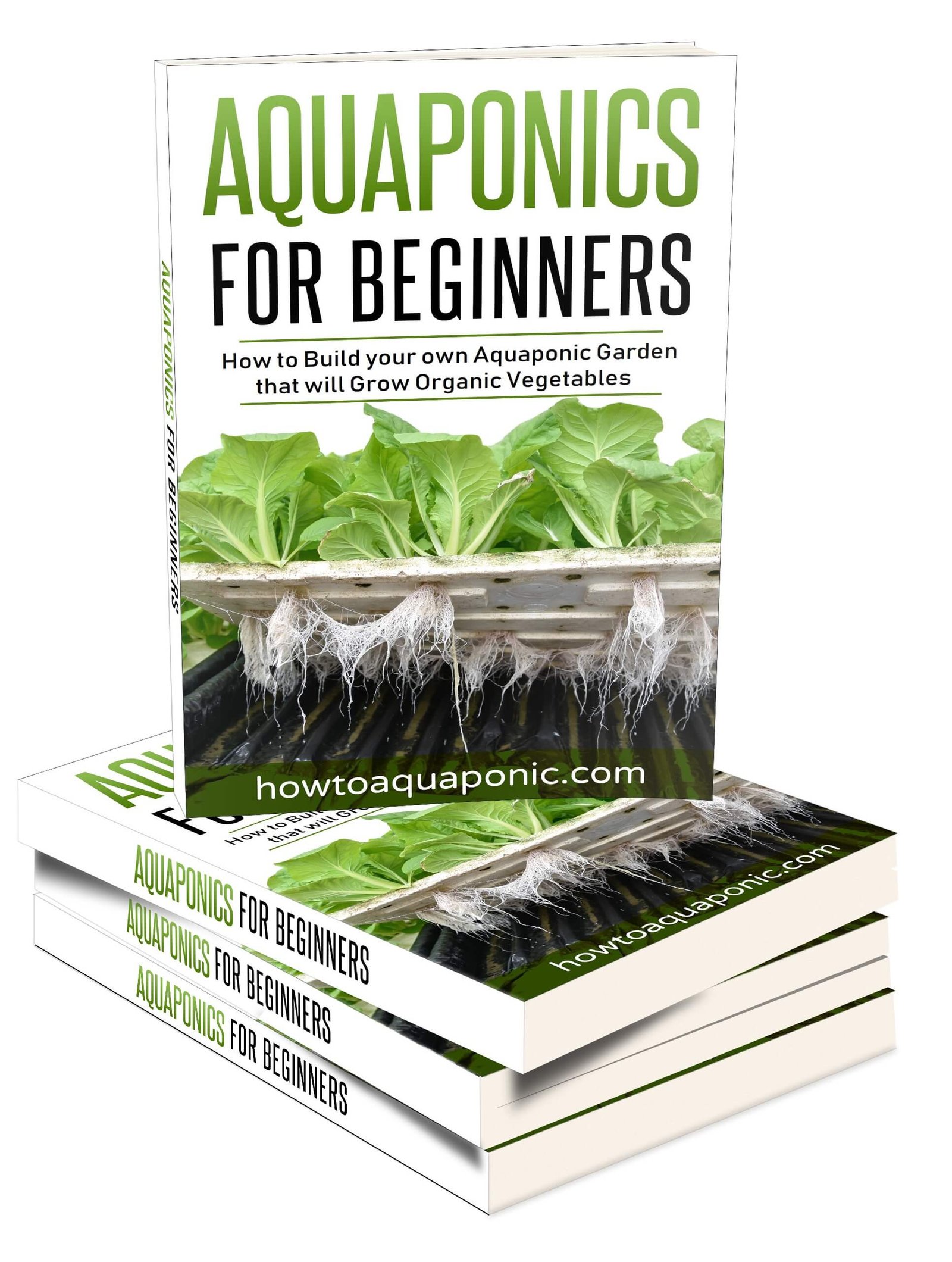Have you ever heard of wicking bed aquaponics? Perhaps you know the term but aren’t sure what it really entails. The good news is you’re about to find out! Check out this guide to discover everything you need to know about wicking bed aquaponics and how to get started.
Everyone should try aquaponics at least once in their life. There is a deep satisfaction in growing your own food; especially when it’s this easy! But, more importantly, there are many different ways in which to achieve the best possible results, you need to try as many of them as possible.
The original premise behind wicking beds was to provide a sustainable growing environment in desert conditions.
You may not live in a desert but this approach will ensure your plants have the water and nutrition they need; which means you’ll find it easier to look after and successfully grow anything.
What is a wicking bed?
The original wicking bed uses rainwater, but, by hooking it up to your aquaponics system you won’t just give your plants water, they’ll have the nitrates they need as well. In fact, the wicking bed is often described as the best way of growing root vegetables, such as carrots and potatoes.
In fact, the aquaponics wicking bed is as close as you’ll get to aquaponics with soil! To be effective the wicking bed will need to have approximately 3” of wicking material. This is the fibers that absorb the water and allow it to move upwards, to the soil that you put above it.
Yes, you read that right, this really is aquaponics with soil! Plants grow their roots into the soil and reach towards the wicking material; which ensures the soil always has enough moisture.
In short, you have a tank with 3” of wicking material, (which is supplied with water by your fish tank), soil on top, and plants growing in the soil.
There are several different options you can choose from for the wicking material:
- Straw – Good at absorbing water but decomposes surprisingly quickly.
- Vermiculite – Very effective at creating a water reserve as there are plenty of pockets for the water to sit in. But it can retain moisture preventing it from getting to the plants.
- Coco Coir – This is a great option for many plants, such as garlic and onions. It represents a good balance between water retention, soil support, and aeration.
The real benefit of this system in the desert is that the water cannot evaporate as it is below the soil line; even in the hottest and driest of weathers you’re plants will flourish!
Water is pumped into the base of this system from your fish tank, it is usually done once a week; entering from a pipe at the top of the grow bed; preventing soil and other contaminants from getting into the wicking area.
 I have written a book that contains all the information you need to get started with aquaponics.
I have written a book that contains all the information you need to get started with aquaponics.
Don’t be the person that makes painful mistakes during your first aquaponics build!
It has 265 pages filled with information about aquaponics. It’s available in paperback or eBook format.
You can buy it here on Amazon.com
Why is a wicking bed used in aquaponics?
The wicking bed is a great way to expand your growing area without having to increase the size of your fish tank.
It will allow you to grow virtually any plant and experiment with different techniques to decide which works best for you and your environment. But, best of all, is the fact that this is very easy to set up and add to your current aquaponics system.
Advantages and disadvantages of wicking beds
As with any system, there are several advantages and disadvantages:
The Pros
- Expansion of your growing Space
The only limit to the size of your wicking bed is the amount of water you can spare from your fish tank.
- Ease of setting up the wicking beds
You can use virtually any container to create a wicking bed, then all you need is a pipe for water in, overflow drain, wicking material, and soil. It’s that simple!
- Water Use
Uses as much as 50% less water than a traditional approach to growing plants.
- Weed Control
Because these plants are watered from underneath the top layer of soil tends to stay dry. This makes it more difficult for weeds to establish themselves.
- Extremely Low Maintenance
Once you’ve established the system you merely need to water it; once a week should be sufficient. Of course, you’ll also have to harvest your plants when they’re ready.
The Cons
- Location
The aquaponics wicking bed needs to be after any standard aquaponics growing container; this allows the bacteria to convert ammonia into nitrates. If this isn’t possible you’ll need a biofilter in your system, before the wicking bed.
- Water usage
Water pumped out of the aquaponics system to the wicking beds should not be returned to the fish tank. This means you’ll need to replace the water in your aquaponics system and make sure it is the right temperature, pH, etc. for your fish.
- Cost
A wicking bed doesn’t need to cost much to make, especially if you’re creating your own diy wicking bed. But, it should be noted that it will cost more than a traditional raised bed.
- Dampness
You want the soil to stay moist for the plants to get all the necessary nutrients. But, if it is holding its water too well you’ll find that some vegetables don’t grow as well as they could; check out the best plants section below for more info.
How to make a wicking bed for aquaponics
It’s actually surprisingly easy to make a DIY wicking bed, just follow these step by step instructions:
- Grab A Container
You can use virtually anything for this! An old rigid pond liner, bath, or even a refrigerator. Of course, you can just purchase a fiberglass tub if you prefer.
There is no set depth you need to have, but, you should bear in mind that you need 3 inches of wicking material before the soil can go in. The depth of your soil will depend on which plants you want to grow and how deep their roots like to go. Ideally, you’ll want to allow 6-8 inches of soil on top of your wicking material.
- Setting Up The System
Having got a container you’ll need to position two pipes in it. One should be from the base of the container and stretch above the height of the container; this is for the water to come in. You’ll need to drill holes in the sides at the base of this pipe; allowing the water to fill the wicking area.
You can add a 90° bend in this pipe and run it along the bottom of your container, helping the water to flow evenly across the reservoir. Of course, it will also need to have holes in it to let the water out.
The diameter of this pipe should match the pipes from your pump; this will reduce the risk of flow issues or leakage.
The other pipe should be positioned at the other end of the wicking bed. It should also extend up to above the height of the container and have holes in the bottom, (this time to let the water into it). But, it also needs a ‘T’ junction fitted to this pipe; this allows excess water to flow out of your system; preventing the soil from becoming flooded.
The ‘T’ junction should be positioned at the same height as the top of your wicking material.
That’s it!
Top Tip: If you want an easy way to track the water level add a clear window into the side of your container, covering the bottom 3-4”. You’ll need to use silicon to make sure water can’t leak out of the window join.
It’s worth noting that the second pipe only goes above the height of the container to provide you with an extra viewing option. This will help to ensure you have the water level right.
- Preparing the Bed
You can now place your chosen wicking material in the base of your container. It needs to be 3” deep and cover the whole container evenly.
You can place soil directly on top of this, but, it is better to add a layer of weed control fabric. This will stop roots from getting into the wicker bed and damaging the flow of water.
With this in position you’ll be able to add your soil on top, to your desired height; 6”-12” is sufficient for most plants.
- Test Before Planting
It’s a good idea at this point to run your pump and fill the wicking area. You don’t have to use water from your fish tank to test the system. It will tell you how long the pump should run for and ensure the soil doesn’t start to float. You’ll know the wicking bed is full when water starts to come out the overflow pipe.
Once you’re happy with this and have moistened the soil thoroughly in the process, you’ll be able to add your plants.
Best plants for a wicking bed in Aquaponics
That just leaves the question of which plants should you focus on in a wicking bed aquaponics system?
Wicking bed aquaponics systems are especially good for growing root crops or tuber type ones. These include potatoes, beets, carrots, lettuces, and most other vegetables. In fact, this could be described as the main purpose for using a wicking bed in aquaponics.
However, they are not a good option for trees and other perennials that tend to have deeper root structures.
Of course, you shouldn’t be afraid to experiment! Try out some of the different wicking bed aquaponics techniques and choose the best one for your own needs.
 I have written a book that contains all the information you need to get started with aquaponics.
I have written a book that contains all the information you need to get started with aquaponics.
Don’t be the person that makes painful mistakes during your first aquaponics build!
It has 265 pages filled with information about aquaponics. It’s available in paperback or eBook format.
You can buy it here on Amazon.com

Nick loves building, managing and giving others advice on aquaponics. He created this website to do just that. He is the author of Aquaponics for beginners. If you got a question contact him here or read more on the about page here.
